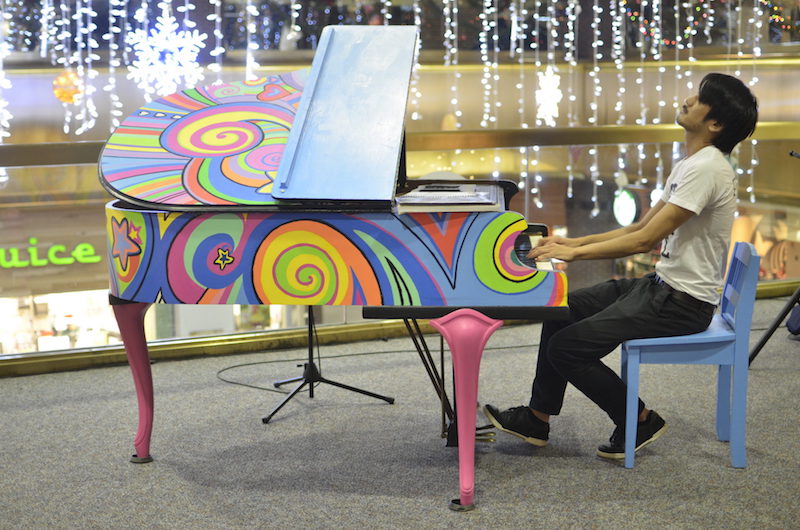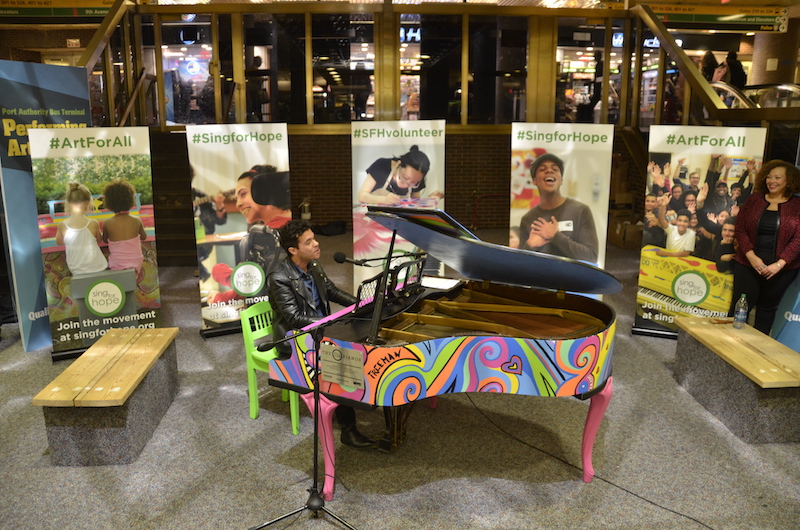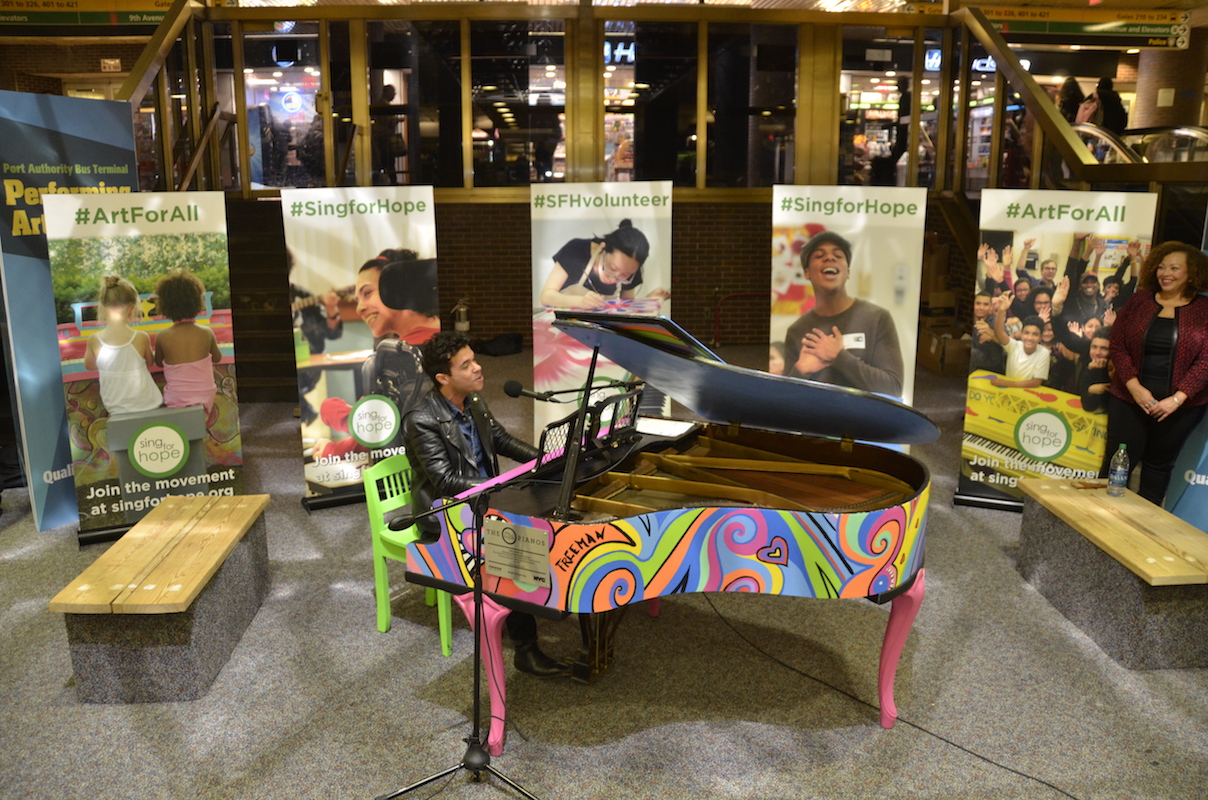 Image courtesy Sing for Hope (pianist Jae Han)
Image courtesy Sing for Hope (pianist Jae Han)
The street piano is believed to have originated in England completely by accident, when a student could not haul his piano up the stairs of his new apartment, leaving it on the sidewalk and inviting passersby to play it instead. Now, the presence of pianos in public spaces is a familiarity in dozens of cities around the world, and New York City’s Port Authority Bus Terminal piano is one of them.
Urbanist and performer Adrian Untermyer had the idea to bring a piano to the space in the bus terminal that used to be the operations control center, which had been moved out of sight after 9/11. With permission from the General Manager of Port Authority, and the help of nonprofit Sing for Hope, which provided the piano, and artist Patrick Freeman who painted it, it was set up last fall in what is now the Port Authority Bus Terminal Performing Arts Stage.
Sing for Hope sets up hundreds of public pianos in New York throughout the year and then donates them to public schools, as well as various kinds of other art and music to community spaces. The Port Authority didn’t acknowledge the piano initially, but today volunteers play it on Wednesdays and Fridays during commute times, and anyone can sign up to be a volunteer.
 Image courtesy Sing for Hope (pianist Neil Davis)
Image courtesy Sing for Hope (pianist Neil Davis)
“The whole point of bringing this piano here is to bring light and joy and music to a space that we all know but may not particularly love,” Mr. Untermyer explained. “We’re trying to make it more and more of a New York institution.”
A few years ago, Donald Gould, who was homeless at the time, became famous when a video of him playing a public piano in Sarasota, Florida went viral. Public art has long been applauded as a democratic way of bringing communities together, as well as a standard and inclusive means of revitalizing dead urban spaces.
While Port Authority is far from dead, it is certainly not vital in every sense of the word. “Port Authority is really weary,” Mr. Untermyer says. In a building where time seems to speed up and moods often are low, public music and bright colors are a welcome presence.
Mr. Untermyer is also working on a very long term project of using public art to rejuvenate New York’s railway tracks that are now in a state of disuse. “People are desperate for the life and vibrancy that’s being choked out of New York,” he told us in an interview. With new or rehabilitated carriages on existing tracks, New York’s transportation scene could change drastically, and artists performing on carriages that move along these tracks could draw the public to these abandoned resources.
Though the public-ness of the Port Authority piano is not the same sort as outdoor, truly public spaces (because of safety and vandalism concerns, there are specific visiting hours) the piano still has its regulars; an old woman from the area with some mental health issues likes to come play it, and sometimes Mr. Untermyer will be playing it and he will look up and realize that an audience of one or two people has entered the piano room that he thought was locked, or that a crowd of homeless people are watching from the public hall above.
In this way, the piano challenges the original outrageous intention to play classical music in the building to keep homeless people out. But public places, the piano declares, are not for refinement that excludes the public. “For a lot of people, Port Authority is home,” says Mr. Untermyer, who comes from a family of appreciating public space. His great-great-grandfather started the first public garden in Yonkers, and his grandmother started a Forest Preserve District outside of Chicago. “I like to think that the piano for these people is about having some dignity, and being able to enjoy a show like anyone else in the city.”
Next, check out The Top 10 Secrets of NYC’s Port Authority Bus Terminal.






